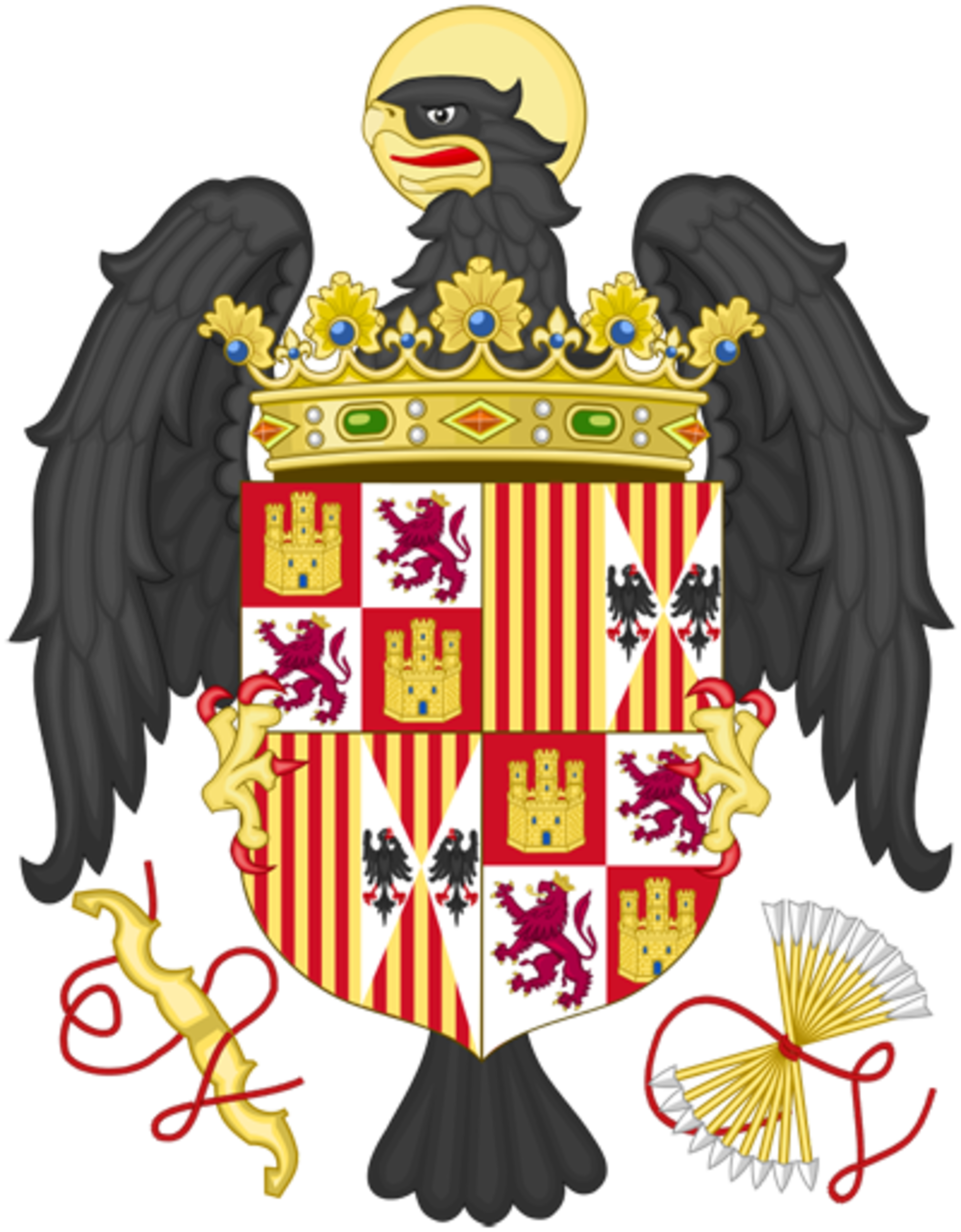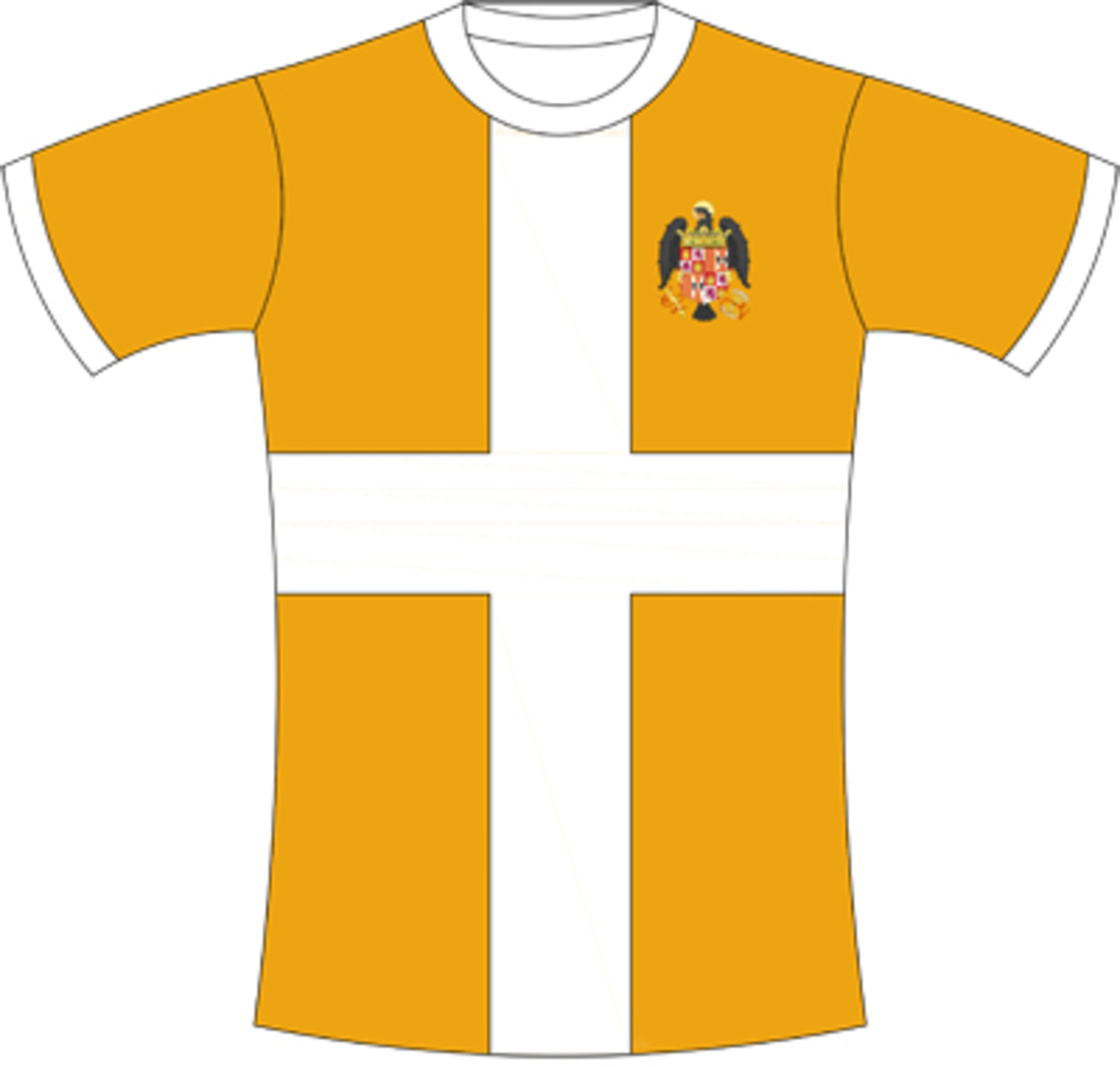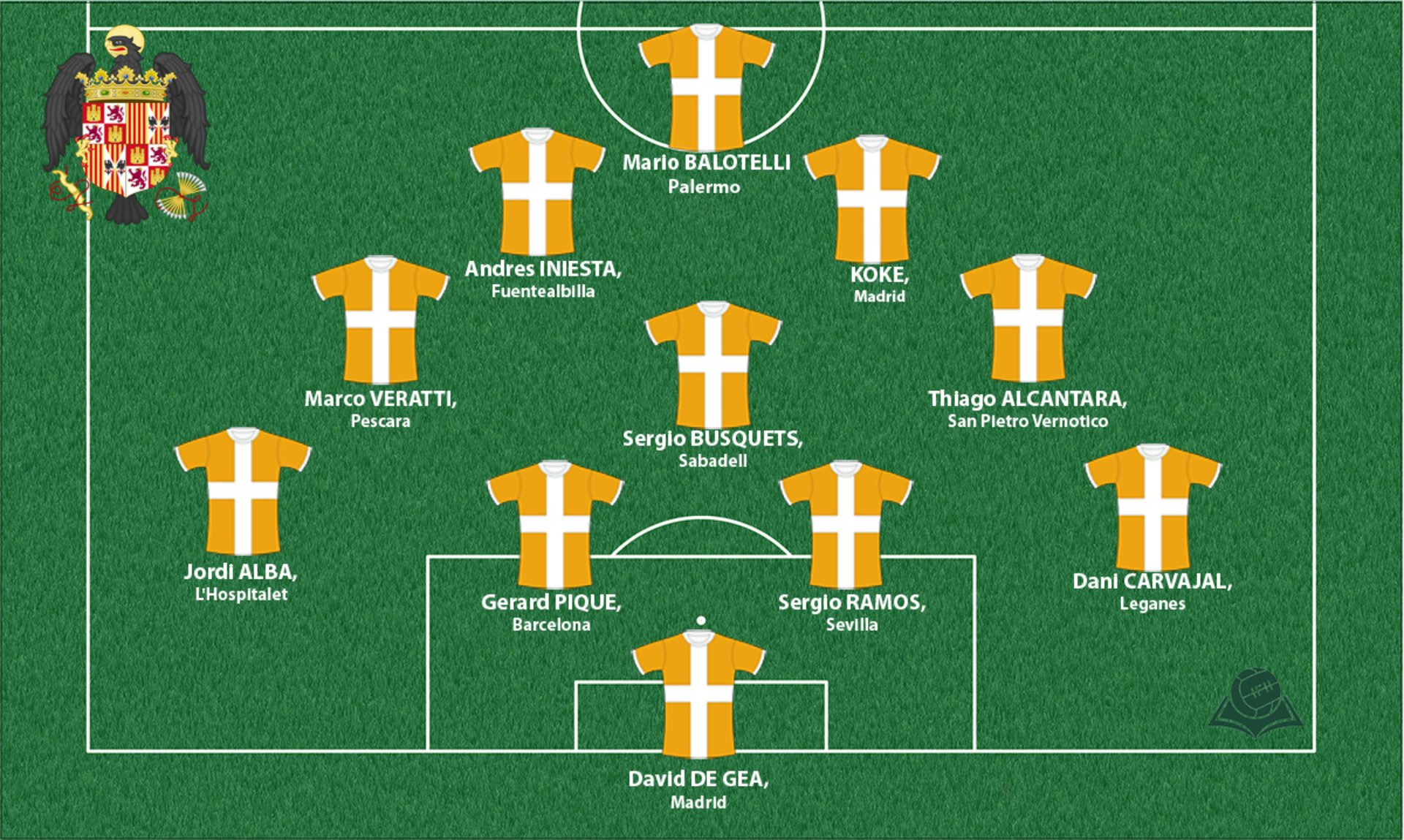The Crown of Castile and Aragon
The marriage between Ferdinand II of Aragon and Isabella I of Castile of 1469 had happened mainly to preserve them on the throne, as their rights to the throne were seriously disputed. In the beginning, it represented a mere personal alliance, since both states retained their own existing sovereign institutions and their own legislation. However, the future would soon show that it had marked a crucial stage in the process of creating a unitary state of Spain.

Coat of arms

Shirt
| Position | First name | Last name | Mjesto rođenja | Like | Dislike | |
|---|---|---|---|---|---|---|
| GK | David | DE GEA | Madrid |
24 |
5 |
|
| GK | Gianluigi | DONNARUMMA | Castellammare di Stabia |
16 |
4 |
|
| GK | Iker | CASILLAS | Móstoles |
16 |
0 |
|
| DC | Gerard | PIQUE | Barcelona |
19 |
9 |
|
| DC | Jesus | VALLEJO | Zaragoza |
6 |
2 |
|
| DC | Raul | ALBIOL | Vilamarxant |
5 |
2 |
|
| DRC | Sergio | RAMOS | Sevilla |
19 |
5 |
|
| DR | Daniel | CARVAJAL | Leganes |
16 |
4 |
|
| DR | Torres Belén | JUANFRAN | Crevillent |
4 |
1 |
|
| DR/MR | Hector | BELLERIN | Barcelona |
11 |
5 |
|
| DL | Jordi | ALBA | L'Hospitalet |
18 |
3 |
|
| DL | Jose Luis | GAYA | Pedreguer |
4 |
0 |
|
| DLC/ML | Marcos | ALONSO | Madrid |
11 |
0 |
|
| DMC | Dani | CEBALLOS | Utrera |
4 |
1 |
|
| DMC | Gabriel Fernández Arenas | GABI | Madrid |
4 |
1 |
|
| DMC | Sergio | BUSQUETS | Sabadell |
14 |
2 |
|
| MC | Andres | INIESTA | Fuentealbilla |
19 |
1 |
|
| MC | Marco | VERATTI | Pescara |
7 |
0 |
|
| MC | Sergej | MILINKOVIĆ-SAVIĆ | Lleida |
16 |
3 |
|
| MC | Thiago | ALCANTARA | San Pietro Vernotico |
18 |
1 |
|
| MRLC | Jorge Merodio | KOKE | Madrid |
8 |
0 |
|
| MRLC | SAUL | Niguez | Elche |
9 |
0 |
|
| AMC/SS | Cesc | FABREGAS | Arenys de Mar |
11 |
1 |
|
| AMRLC | Juan | MATA | Ocón de Villafranca |
10 |
0 |
|
| AMRLC | Marco | ASENSIO | Palma de Mallorca |
21 |
0 |
|
| AMRL | Gerard | DEULOFEU | Riudarenes |
4 |
0 |
|
| AMRL/SS | Lorenzo | INSIGNE | Naples |
10 |
3 |
|
| AMRL/FC | Keita | BALDE | Arbùcies |
6 |
0 |
|
| FRLC | Giovanni | SIMEONE | Madrid |
2 |
1 |
|
| FRLC | Iago | ASPAS | Moaña |
4 |
0 |
|
| FC | Alvaro | MORATA | Madrid |
11 |
1 |
|
| FC | Ciro | IMMOBILE | Torre Annunziata |
9 |
3 |
|
| FC | Mario | BALOTELLI | Palermo |
5 |
5 |
(Today: Spain (without Basque Country and the area arounf Granada) and southern Italy)
Four bloody civil wars occurred in Castile between 1415 and 1479, and Aragon was shaken by the revolts from the citizen class, as well as those from Catalan patricians and nobility in 1451-52 and 1460 – 1461. In the context of those problems the question of uniting these two kingdoms arose, which was then achieved through marriage of Ferdinand I of Aragon and Isabella II of Castile in 1479. Of course, this did not mean that the aforementioned problems were solved, but a commonly accepted institutional framework for solving them was thus formed. At the end of the 15th century the Inquisition in Castile and Aragon went through some significant changes – it fell under the strict control of the state instead of the Church. The pope would now only confirm the appointing of the Grand Inquisitors, and all other judges were appointed or dismissed directly by the Spanish king, and the proceeds from monetary fines from then on ended up in the royal coffers. Also, after the conversion and exile of Jews and the Moors at the beginning of the 16th century, the whole Peninsula became Christian.
All of the abovementioned procedures and measures should be observed within the context of the aspirations for the complete elimination of groups which could compete in the distribution of domestic and foreign riches and resources, as well as the affirmation of the nobility.Finally, with the Castilian conquest of the Kingdom of Navarre (1511 – 1514) the whole of the Peninsula (excluding Portugal) came under the rule of a single king. Although the official proclamation of the name of this united kingdom never occurred, the name Spain would become ingrained – after the former Roman province of Hispania, which had continued to be used as a geographical term throughout the Middle Ages. Nevertheless, some of its constituents, such as Aragon, Catalonia, Valencia, Mallorca, and Navarre, kept some of their individual laws and customs until early 18th century, and they would also differ from one another in their regional identities.
Sources
- Felipe FERNANDEZ-ARMESTO, Narodi Europe, Zagreb, 1997.
- Grupa autora, Povijest: Razvijeni srednji vijek , knjiga VII., Zagreb 2008.
- Grupa autora, Povijest: Humanizam i renesansa, doba otkrića, knjiga VIII., Zagreb 2008.
- Nikola Samardžić, Identitet Španije, Admiral Books, 2014.,
- ''History of Spain'', https://en.wikipedia.org/wiki/History_of_Spain#Spanish_Kingdoms_under_the_Habsburgs_.2816th.E2.80.9317th_centuries.29
- Lazar Baćović: Nastanak moderne Španjolske i povijesni uzroci današnjih podjela u španjolskom društvu (1. dio)''; http://www.advance.hr/tekst/nastanak-moderne-spanjolske-i-povijesni-uzroci-danasnjih-podjela-u-spanjolskom-drustvu-1-dio/
- Antonio RIVERA, 'Dva stoljeća novije povijesti u Baskiji'', http://www.matica.hr/hr/324/DVA%20STOLJE%C4%86A%20NOVIJE%20POVIJESTI%20U%20BASKIJI/
- Coat of Arms https://en.wikipedia.org/wiki/List_of_coats_of_arms_of_Spain
